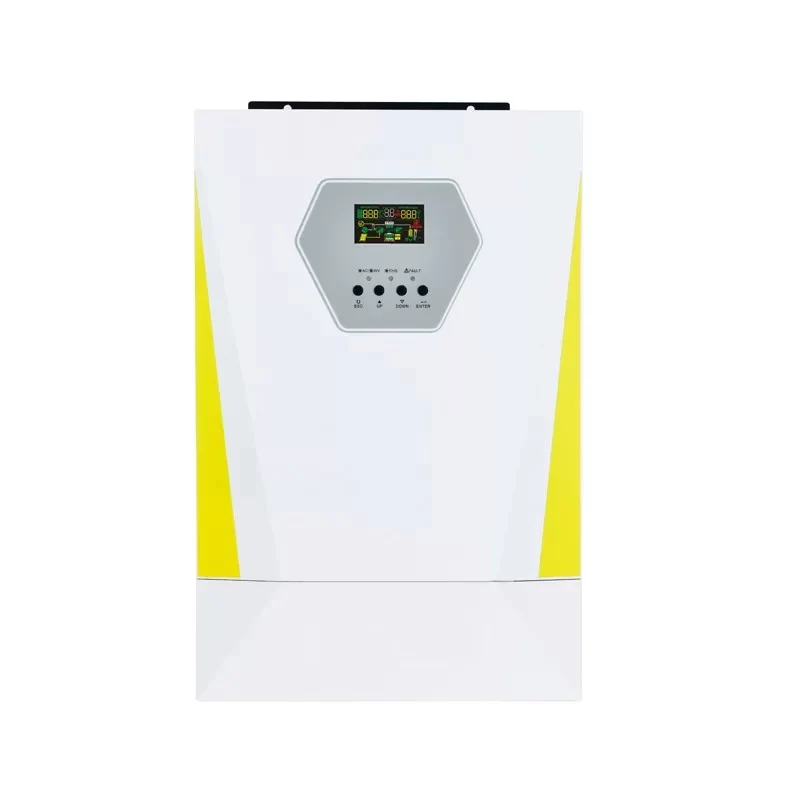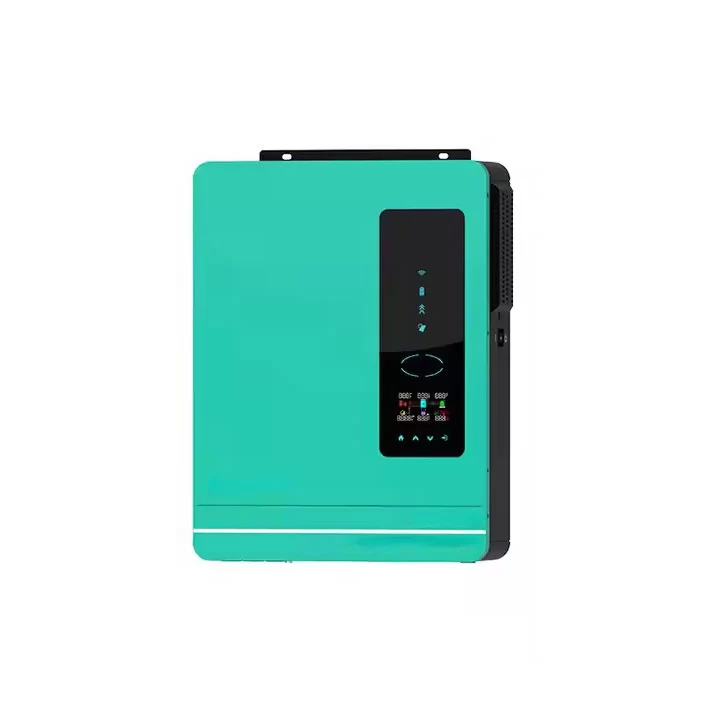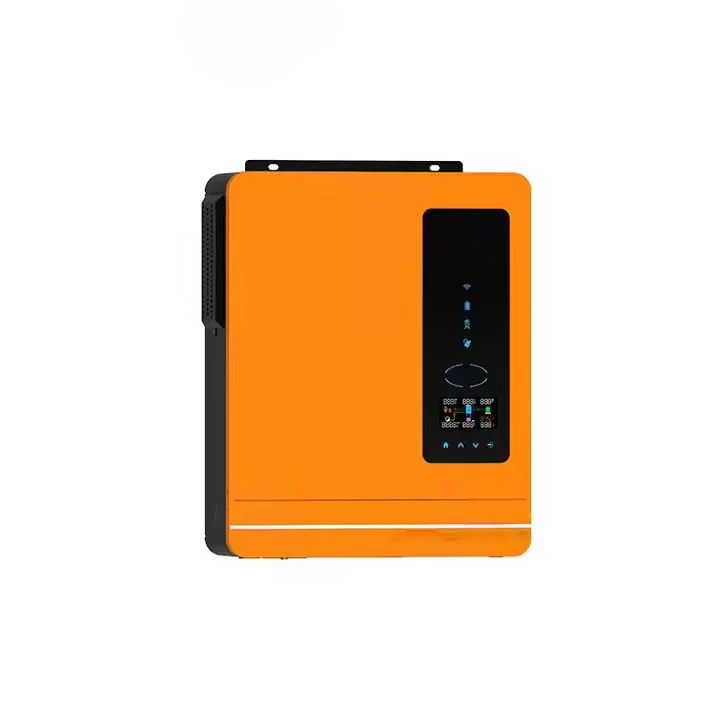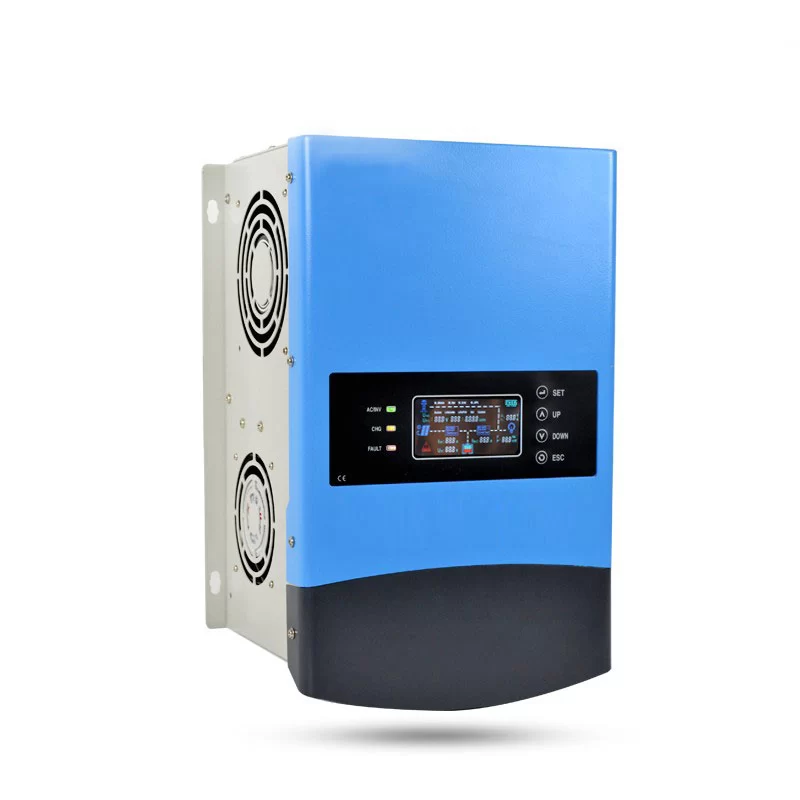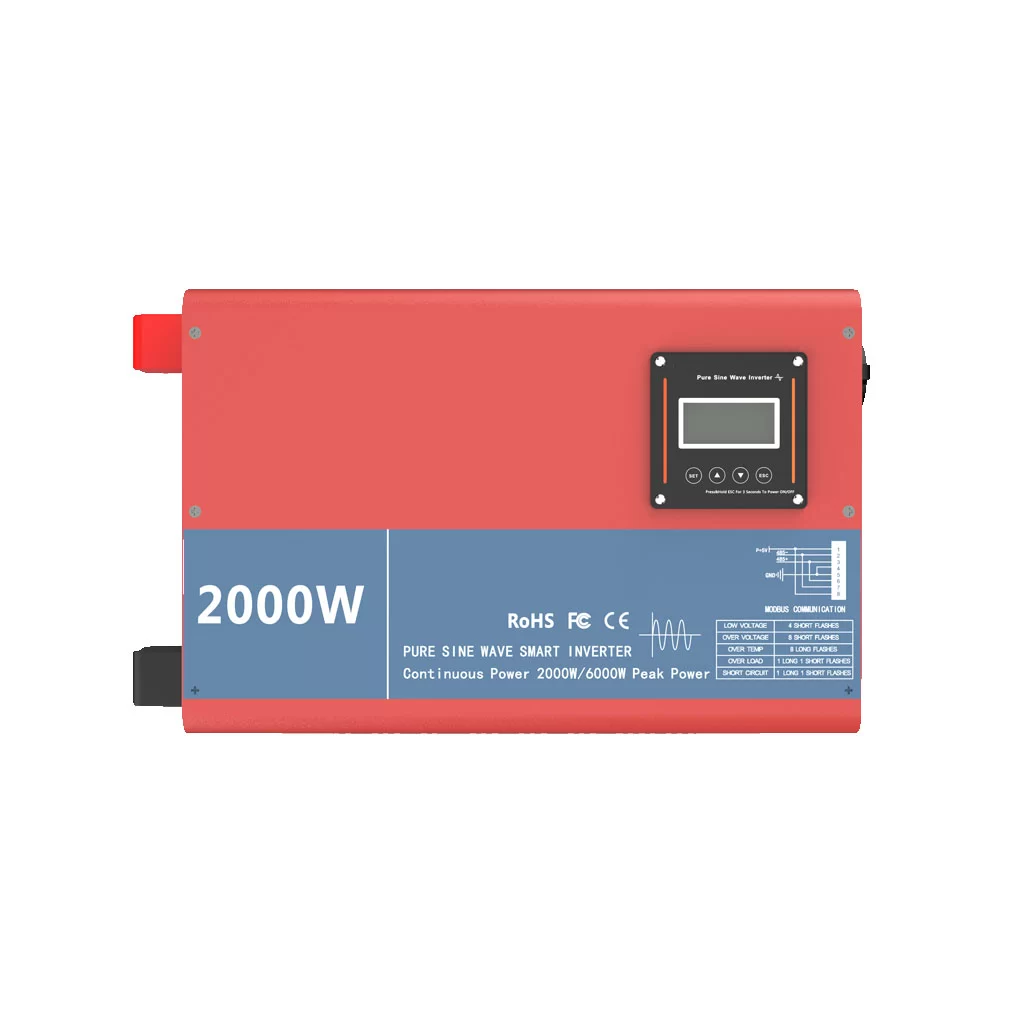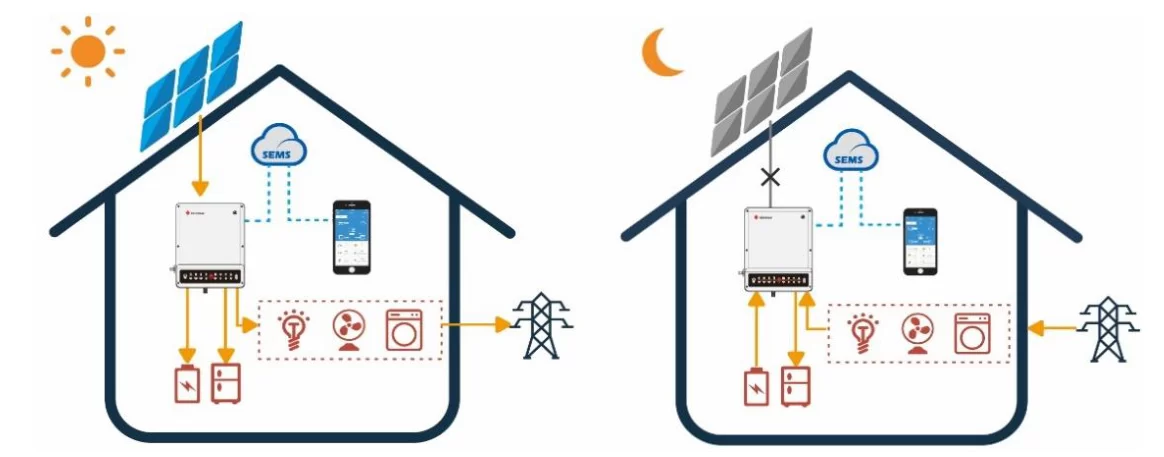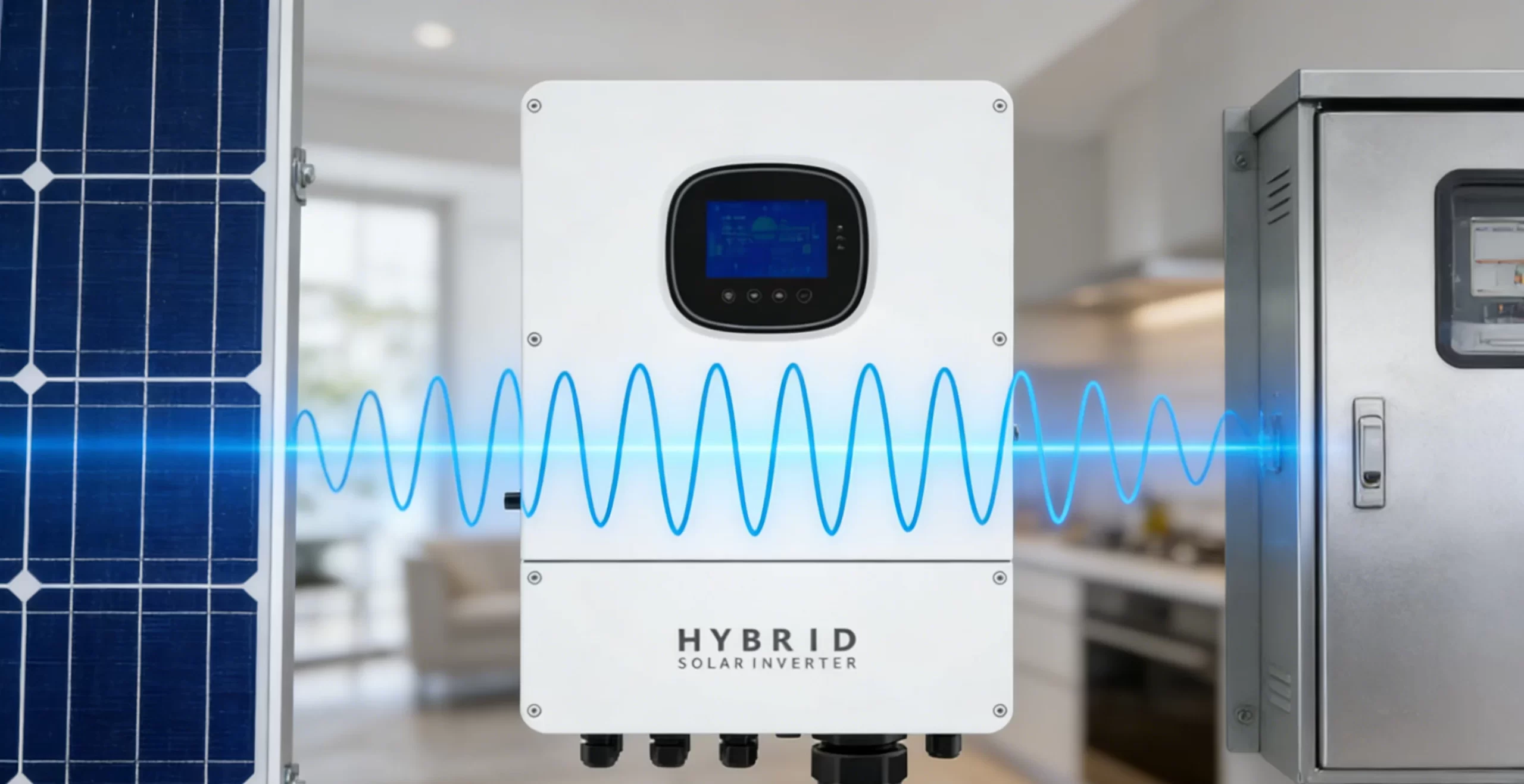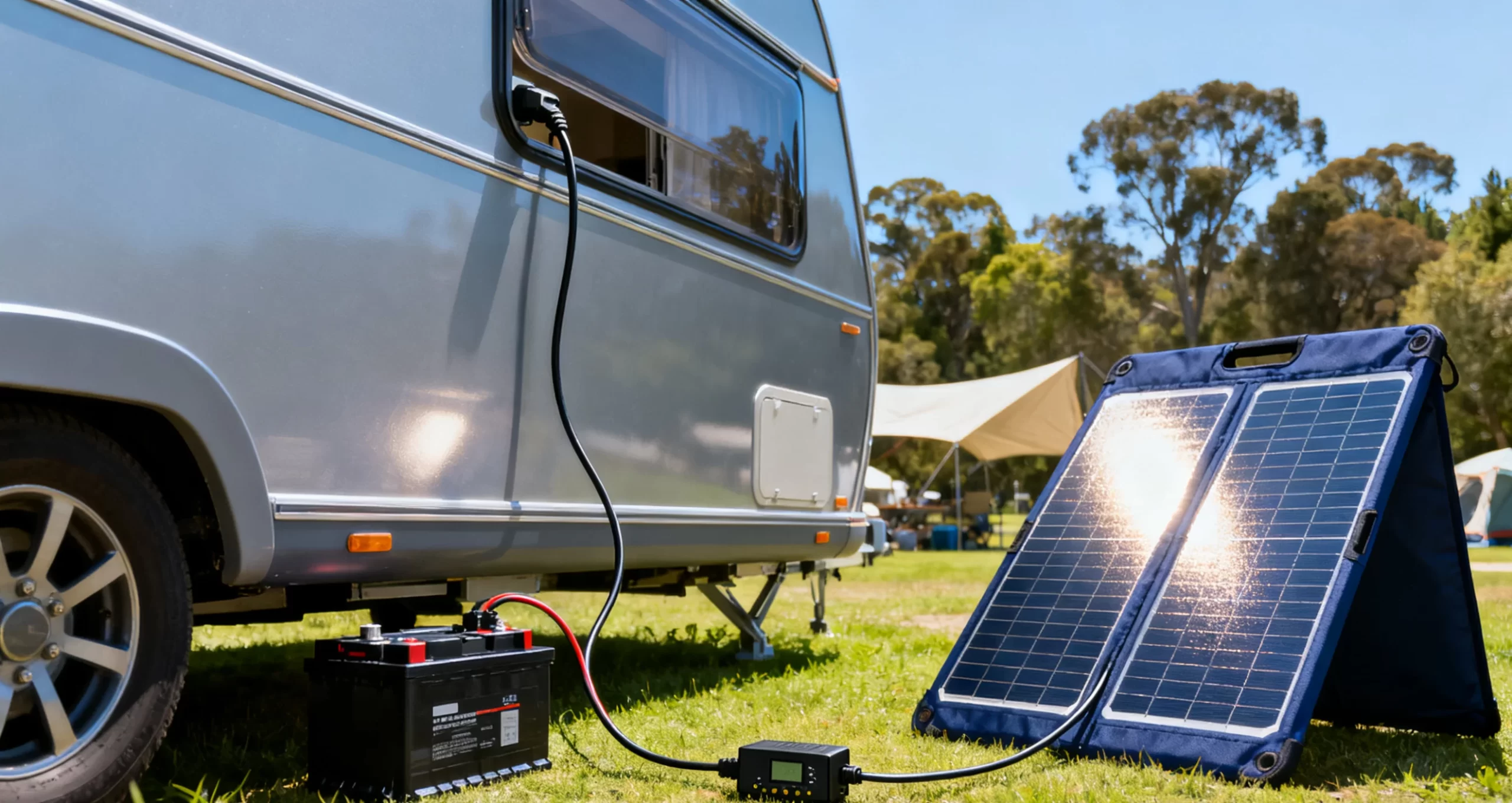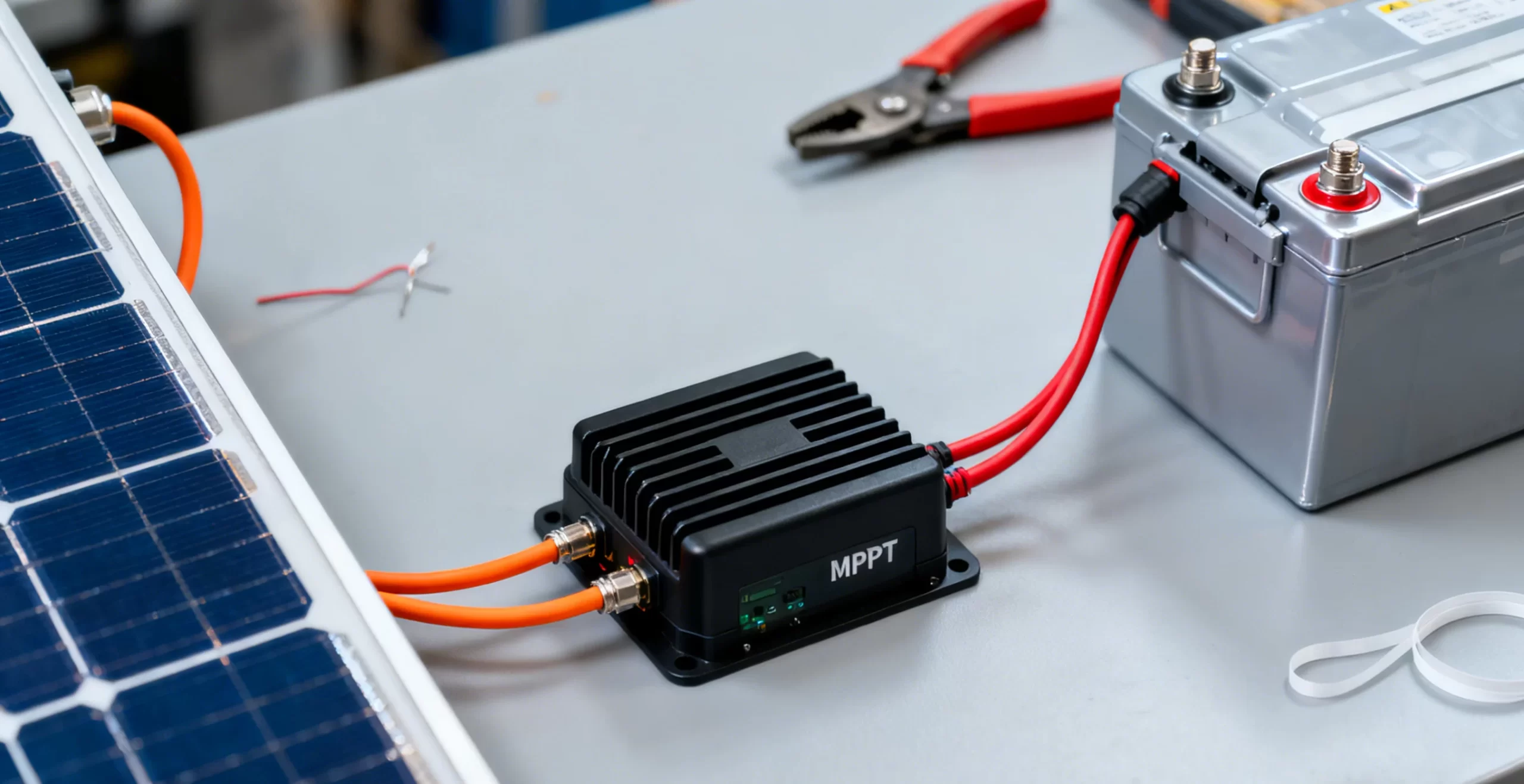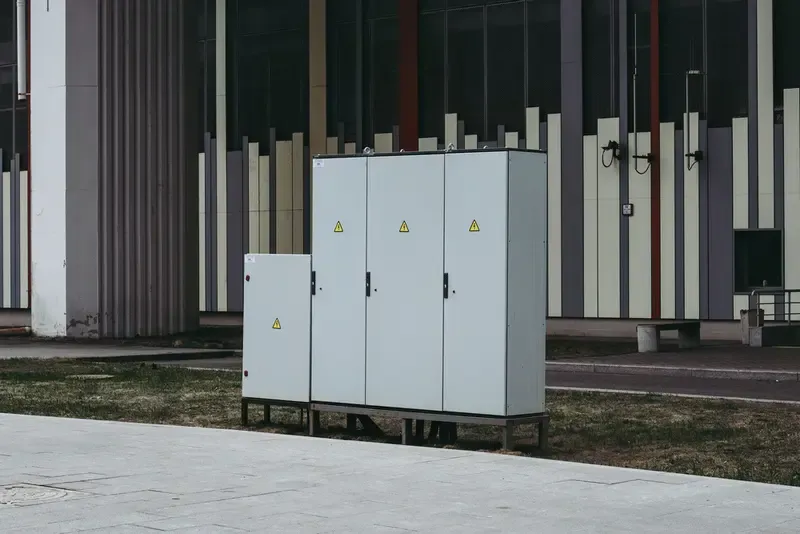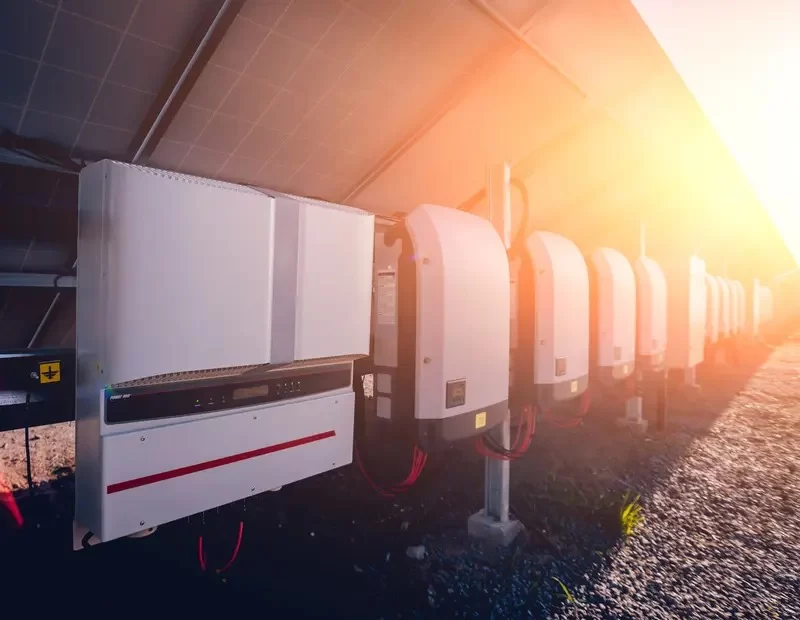- tel:+86-13651638099
- Email: [email protected]
- Official website: www.hj-net.com
- Address: 333 Fengcun Road, Fengxian District, Shanghai
Get A Quote Now!
Day and Night: Connecting Home Solar Systems
Home solar systems are an innovative solution for sustainable energy, relying on photovoltaic modules, inverters, batteries, and connections to the grid. These components work together to provide continuous power, regardless of the time of day.
Daytime Operations
During the day, sunlight hits the rooftop solar panels, where photovoltaic cells convert this light into electrical energy through the photovoltaic effect. The generated energy is then transferred to the inverter module, which converts the DC (direct current) electricity into AC (alternating current) electricity, suitable for home use. This energy is stored in batteries, ready to power household appliances like lights, fans, and even charge electronic devices such as washing machines.
Nighttime Operations
At night, when there is no direct sunlight, the system still functions efficiently. Although the solar panels are not active, the energy stored in the batteries during the day becomes crucial. The inverter module converts the stored DC power back into AC power, providing electricity for lighting and other household appliances. This seamless transition ensures that the home remains powered without interruption.
Grid-Connected and Off-Grid Systems
Home solar power systems can operate in either grid-connected or off-grid modes. In a grid-connected system, any excess electricity generated during the day can be fed back into the grid. This not only maximizes resource utilization but also prevents energy waste. Conversely, off-grid systems rely entirely on battery storage, which is crucial during night or cloudy days when solar generation is low.
Advances in Nighttime Solar Technology
Recent advancements in solar technology have led to the development of solar panels capable of generating electricity at night. Researchers have created innovative panels that utilize thermal energy or infrared radiation to produce power. For instance, scientists at Stanford University have developed a prototype solar panel that can generate a small amount of electricity by harvesting infrared radiation at night. This breakthrough represents a significant leap in solar technology, promising enhanced efficiency and reliability for home solar systems.
Designing a Home Solar Power System
Designing an efficient home solar power system requires careful consideration of various factors. These include selecting the right type of solar panels, determining the appropriate inverter capacity, and calculating the battery storage capacity. An optimized design should match the household’s energy consumption needs and account for local weather conditions. This tailored approach ensures maximum efficiency and cost-effectiveness.
Conclusion
In summary, connecting home solar systems to work seamlessly day and night involves integrating photovoltaic modules, inverters, batteries, and grid connections. During the day, the system converts and stores solar energy, while at night, it relies on stored energy to power the home. Moreover, new technologies are emerging that enable solar panels to generate electricity even at night, further enhancing the system’s efficiency and reliability. Embracing these innovative solutions is a step towards a more sustainable and resilient energy future.
Explore our range of advanced solar solutions and see how they can transform your home energy experience.

